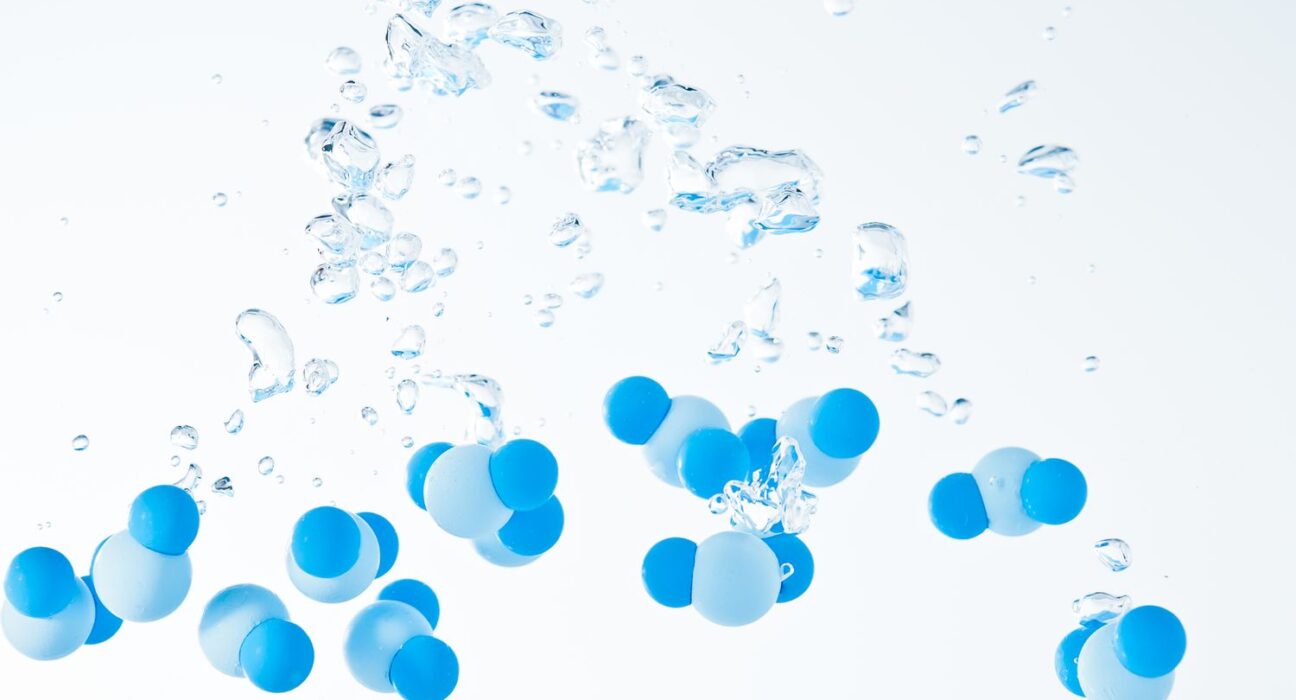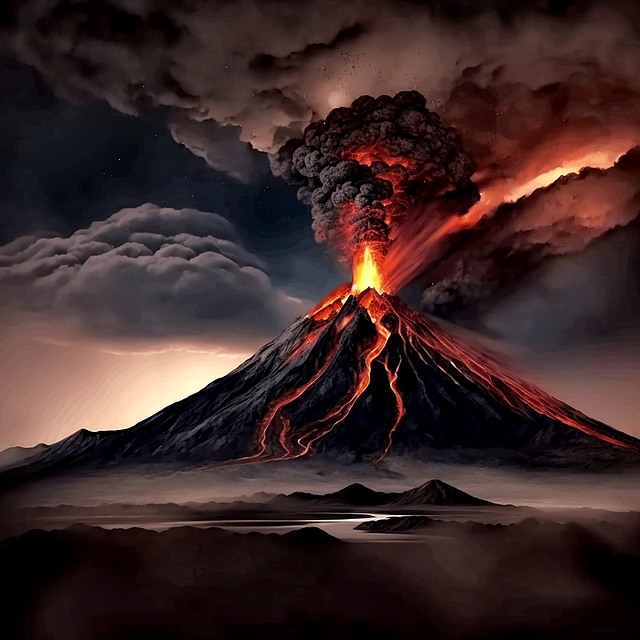Can one Make Water by Combining Hydrogen and Oxygen?

Water is fundamental to all known forms of life and It acts as a solvent, facilitating biochemical reactions, regulating body temperature, and transporting nutrients and waste products, however, the question is: Can one Make Water by Combining Hydrogen and Oxygen? Yes, water can be made by combining hydrogen and oxygen through a chemical combustion reaction.
The chemistry is an oxidation known as combustion in which two gases combine to give another gas (H2 O) at a higher temperature (because it is a highly exothermic reaction).
The process is a classic example of a chemical reaction in which hydrogen (H₂) and oxygen (O₂) gases react to form water (H₂O). The balanced chemical equation for this reaction is: 2H2+O2→2H2O2H2+O2→2H2O2𝐻2+𝑂2→2𝐻2𝑂2𝐻2+𝑂2→2𝐻2𝑂
However, this reaction requires specific conditions:
- Activation Energy: The reaction requires a spark or flame to initiate because hydrogen and oxygen gases are not reactive enough at room temperature. This energy helps to overcome the activation energy barrier.
- Exothermic reaction: Once activated, the reaction is highly exothermic, which means that it releases a lot of energy in the form of heat and light. This is why if it is not controlled properly, it can be dangerous because it can cause an explosion.
Steps to safely combine hydrogen and oxygen to form water
- Containment: React in a controlled environment (such as a laboratory fume hood) to safely manage the gas.
- Appropriate ratio: Ensure the correct stoichiometric ratio of hydrogen to oxygen (2:1) to avoid remaining unreacted gases.
- Controlled ignition: Use a controlled spark or flame to initiate a reaction.
- Safety precautions: Use appropriate safety equipment, such as safety goggles and protective clothing, and keep fire extinguishing equipment nearby.
Sample program
- Fill one balloon with hydrogen and another with oxygen.
- Carefully mix the gas in a safe container.
- Use a remote ignition source, such as a spark generator, to start the reaction.
- Observing the formation of water vapor, it is usually seen as condensation on the wall of the container.
Important considerations
The reaction is violent and can be explosive. It can only be carried out under the supervision of appropriate security measures and well-trained professionals.
Due to safety and efficiency considerations, industrial production of water is usually not done in this way. Instead, water is usually obtained from natural sources and purified as needed.
In short, although it is chemically possible to make water by combining hydrogen and oxygen, due to the explosive nature of the reaction, this process must be handled very carefully.
Ubiquity on Earth
Water covers approximately 71% of the Earth’s surface, primarily in oceans. It is also present in rivers, lakes, glaciers, and in the atmosphere as water vapor.
Chemical Composition of Water
- H2O Molecule
Water is chemically represented by the formula H₂O, indicating that each molecule consists of two hydrogen (H) atoms and one oxygen (O) atom.
- Elements Involved: Hydrogen (H) and Oxygen (O)
Hydrogen is the lightest and most abundant element in the universe, while oxygen is a highly reactive non-metal and an essential component of the Earth’s atmosphere.
This article aims to elucidate the chemical process involved in synthesizing water from hydrogen and oxygen.
Basic Chemistry of Water Formation
Chemical Reaction
-
Balanced Equation: 2H₂ + O₂ → 2H₂O
The reaction between hydrogen and oxygen to form water is expressed by the balanced chemical equation 2H₂ + O₂ → 2H₂O. This equation indicates that two molecules of hydrogen react with one molecule of oxygen to produce two molecules of water.
-
Reaction Type: Combustion Reaction
This is a combustion reaction, where hydrogen burns in the presence of oxygen, releasing energy in the form of heat and light.
Bond Formation
-
Covalent Bonds Between Hydrogen and Oxygen Atoms
In the H₂O molecule, each hydrogen atom forms a single covalent bond with the oxygen atom, sharing electrons to achieve stability.
-
Formation of Polar Water Molecules
Water molecules are polar, with a partial negative charge near the oxygen atom and partial positive charges near the hydrogen atoms, resulting in hydrogen bonding between molecules.
Requirements for the Reaction
Reactants
- Hydrogen Gas (H₂)
Hydrogen gas, a diatomic molecule, is highly flammable and must be handled with care.
- Oxygen Gas (O₂)
Oxygen gas, also diatomic, supports combustion and must be managed to avoid risks of fire and explosion.
Conditions for the Reaction
-
Proper Ratio: 2:1 Ratio of Hydrogen to Oxygen
To ensure complete reaction, hydrogen and oxygen must be mixed in a 2:1 molar ratio.
-
Energy Input: Activation Energy Needed to Initiate the Reaction
An external energy source, such as a spark or flame, is required to overcome the activation energy barrier and initiate the reaction.
Catalysts
Role of Catalysts in Facilitating the Reaction
While the reaction between hydrogen and oxygen does not typically require a catalyst, certain catalysts can lower the activation energy and increase the reaction rate.
Procedure for Combining Hydrogen and Oxygen
Laboratory Setup
Containment and Safety Measures
The reaction should be conducted in a controlled environment, such as a fume hood or a sealed reaction chamber, to contain any explosive potential.
Mixing Apparatus
Apparatus such as gas syringes or a gas burette can be used to accurately mix the gases in the correct proportions.
Initiating the Reaction
-
Source of Ignition (Spark or Flame)
A spark or flame is introduced to the gas mixture to provide the necessary activation energy.
-
Observing the Reaction Process
The reaction is rapid and exothermic, producing a bright flame and heat.
Resulting Product
-
Formation of Water Vapor
The immediate product of the reaction is water vapor.
-
Condensation to Liquid Water
Upon cooling, the water vapor condenses to form liquid water.
Safety Considerations
Flammability of Hydrogen
-
Risks Associated with Hydrogen Gas
Hydrogen is highly flammable and can form explosive mixtures with air.
-
Proper Handling and Storage
Hydrogen should be stored in appropriate containers and handled in well-ventilated areas away from ignition sources.
Explosive Potential
-
Potential for Explosive Reaction
The reaction between hydrogen and oxygen can be explosive, especially in confined spaces.
-
Precautionary Measures
Conduct the reaction in a controlled environment with appropriate safety gear, including goggles, gloves, and protective clothing.
Handling Oxygen
-
Risks of Oxygen Enrichment
High concentrations of oxygen can enhance the flammability of materials and increase the risk of fire.
-
Safety Protocols
Use oxygen in well-ventilated areas and avoid contact with flammable substances.
Practical Applications
Industrial Processes
- Water Production in Space Missions
In space missions, water can be synthesized by combining hydrogen and oxygen generated from the electrolysis of water, creating a closed-loop system.
-
Hydrogen Fuel Cells
In hydrogen fuel cells, the reaction between hydrogen and oxygen produces water and electricity, offering a clean energy source.
Scientific Research
-
Study of Combustion and Reaction Kinetics
Understanding the reaction kinetics and combustion process of hydrogen and oxygen is important for fields like aerospace engineering and energy production.
-
Synthesis of Water in Controlled Environments
Synthesizing water in laboratories allows for the study of its properties and behaviors under various conditions.
Challenges and Limitations
Energy Requirements
-
High Activation Energy
The reaction requires a significant initial energy input to overcome the activation energy barrier.
-
Energy Efficiency Considerations
Efficient energy use is crucial for the practicality of synthesizing water on a large scale.
Practicality
-
Comparison with Natural Water Sources
Natural water sources are more accessible and economical than synthesizing water through chemical reactions.
-
Economic Feasibility
The cost of producing hydrogen and oxygen, and the energy required for the reaction, can be prohibitively high.
Historical Context and Experiments
Early Discoveries
-
Antoine Lavoisier’s Role in Identifying Water Composition
Lavoisier’s experiments in the 18th century helped establish that water is composed of hydrogen and oxygen.
-
Historical Experiments Combining Hydrogen and Oxygen
Early experiments demonstrated the explosive nature of the reaction and the formation of water.
Modern Experiments
-
Current Methodologies
Modern techniques use advanced safety measures and precise equipment to study the reaction.
-
Advancements in Safety and Efficiency
Improved safety protocols and energy-efficient methods have made the process more viable for scientific research.
Environmental and Ethical Considerations
Environmental Impact
-
Impact of Industrial Hydrogen Production
Hydrogen production, particularly from fossil fuels, can have significant environmental impacts.
-
Ecological Footprint of Artificial Water Synthesis
Synthesizing water artificially can have a larger ecological footprint compared to natural water extraction.
Ethical Implications
- Resource Allocation
Allocating resources to synthesize water may divert them from other critical areas, such as renewable energy development.
-
Ethical Considerations in Large-Scale Water Synthesis
Large-scale synthesis must consider the environmental and social impacts, ensuring sustainable and equitable practices.
Conclusion
While technically feasible, synthesizing water from hydrogen and oxygen requires careful handling and significant energy input.
Safety is paramount due to the explosive nature of the reactants, and practicality is limited by energy and economic factors.
Technology advances may improve the process’s efficiency and safety, making it more viable for certain applications.
In the future, synthesizing water could provide a supplementary solution to water scarcity, particularly in arid regions or in space exploration contexts.









